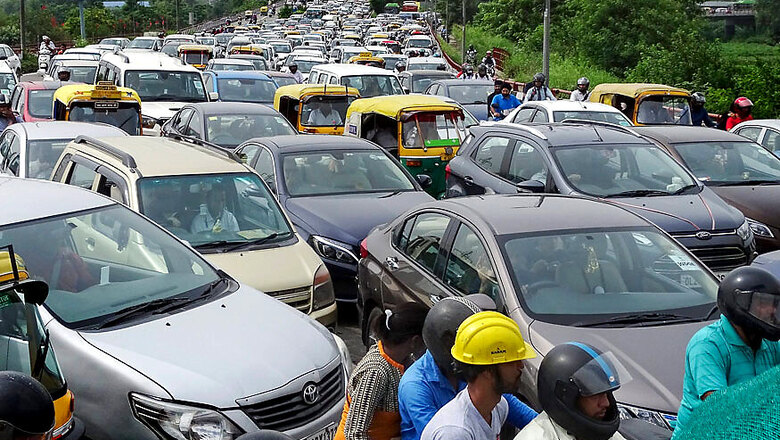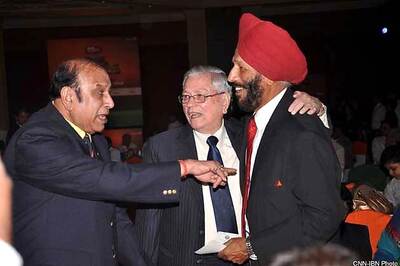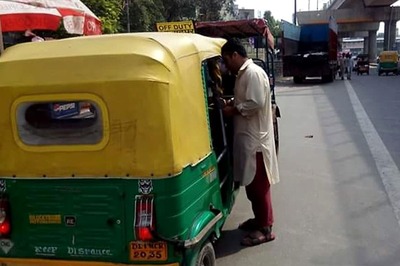
views
New Delhi: The civic agencies in Delhi yielding to push back from their contractors and an eight-month tussle between the Delhi government and its Lieutenant Governor (L-G) means that the capital has, for a second consecutive year, failed to solve its parking crisis and the resultant congestion.
Meanwhile, air quality in Delhi is on the brink of turning severe – when even those who are otherwise perfectly healthy start developing respiratory issues. The Air Quality Index (AQI) in Delhi is at 392, eight points short of ‘severe’ with further deterioration likely in the next week.
The excess supply of parking space, while keeping the price of parking down, undermines eco-friendly forms of commuting like public transport or walking.
Anumita Roychoudhury, of the Centre for Science and Environment (CSE), explained that there were two aspects to the issue of parking.
“As an emergency measure, the aim is to discourage people from using private vehicles and as a result not add to the pollution. But the larger emphasis on a parking policy is a long-term measure that weans people off private vehicles. Even if you increase the parking fees, people will just park their car on a road where parking is not charged,” said Roychoudhury.
A key part of Delhi’s plan to combat pollution is to implement changes in its existing parking policy to reduce congestion. But a tussle between the government and the Lieutenant Governor and a delay by civic agencies to increase parking fees shows that lessons from last year haven’t been learnt.
‘Pushback from contractors’ during the festive season
The emergency plan, which came into place in Delhi on October 15, mandates that when air quality reaches ‘Very Poor’ levels parking rates are to be increased by 3-4 times.
In 2017, as pollution peaked in October post Diwali, the implementation of the measure remained poor. An analysis of the implementation of the plan in 2017 by News18.com found that although the air quality had dipped to the level by October 17, it wasn’t until November 9 that the measure was finally taken.
This year, the Supreme Court-appointed The Environment Pollution (Prevention and Control) Authority (EPCA) had hoped that things would be different. It had, in fact, set February 28, 2018 as the deadline to implement the parking policy almost a year ago.
But on Wednesday, Delhi’s civic agencies – whose prerogative it is to implement the increase – said that they are yet do so, with an official explaining, “We will implement the increase if the air quality further worsens.” Adesh Gupta, north MCD mayor confirmed that “we have not yet increased any parking charges”. Another official of the SDMC added that with the parking policy not in place, implementation of the move was “difficult”.
But an EDMC source added that ‘pressure’ and ‘push back’ from contractors was another key reason for the delay this year. “Each parking lot has been given to a different contractor. Already due to sealing, there are a number of markets that are seeing very low footfall. If parking rates are increased, the contractors will not want to work. This is the peak season for markets and it would be suicidal for them to increase the parking fees.”
Hridesh Mishra, a parking attendant, who works for the contractor at the Defence Colony market in south Delhi added, “This was the first market to be sealed. Already many attendants here have left the market, because after paying the contractor, we had nothing left to pay. Increasing the fees would mean that people would just park their cars on the road, away from the market and walk.”
Who signs off on the parking policy?
This was exactly the problem that the policy — Delhi Maintenance and Management of Parking Rules, 2017 — parking policy was aimed at solving. Put in public consultation in January this year, it noted that “by reducing the cost of driving and by consuming large amounts of space, traditional policies have promoted automobile use, thus undermining public transport, walking and bicycling.”
It suggested that newer approaches that “manage parking demand realistic pricing of parking, commensurate with land value and other factors, shared parking and reduced on-street requirements” be encouraged.
After the Supreme Court order that stated that apart from issues pertaining to Law and Order, Land and Police – the Delhi government has the power to legislate on all other issues, transport minister Kailash Gahlot had forwarded the file to the Transport department and maintained that the file didn’t need to travel to the L-G. The next month, the file was once again sent back to the Law department (also with Gahlot) to consider the question of who signs off on it. Sources maintained that as GRAP came into place, that is where the file remains.
The delay – officials of civic agencies said – has resulted in loss of valuable time, wherein officials had hoped that the new policy would have covered a fifth of Delhi, easing the way for emergency air pollution mitigation measures.
There are around 1 crore registered vehicles in the capital – but parking lots of South and North CMD can accommodate around 25,000 cars each, while those in East have space for around 17,000 cars.




















Comments
0 comment